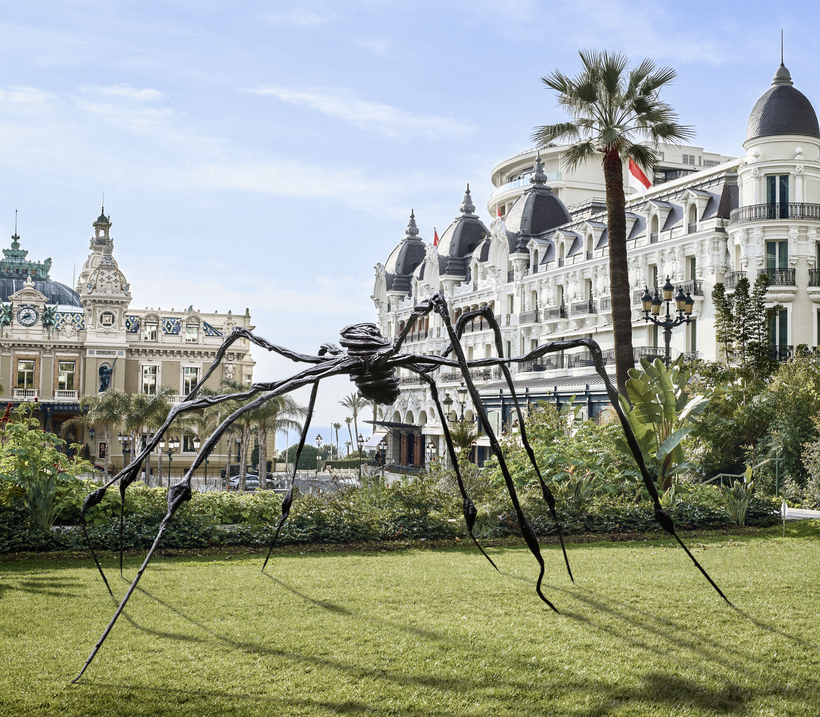Work on the Arts Intel Report, which includes listings of art exhibitions opening around the world, is a little window on who’s getting the most sustained coverage in museums and galleries. For instance, there is almost always a show somewhere (speaking of little windows) on Johannes Vermeer. The hidden geometries of his paintings, their enigmatic emotion, is beguiling to just about everyone. The protean Pablo Picasso is probably the most exhibited of all artists, though the haunted Vincent van Gogh comes close. That pop planet Andy Warhol is receiving a rollout of inventive shows that take different paths into his conceptual space. And the brute beauties of Francis Bacon and Jean-Michel Basquiat are much on the minds of curators.
What of the women? Georgia O’Keeffe and Frida Kahlo are a powerful tag team, the majestic modernism of the former balancing the hothouse confessionals of the latter. One woman, however, stands out as not just the most exhibited female artist, but one who runs head to head with Picasso. She is Louise Bourgeois.
Born in Paris in 1911, to parents who sold and restored tapestries, Bourgeois identified her beloved mother with the act of weaving and its symbolic spider—matriarchal, protective, primal. She also saw her mother as the hare to her father’s wolf; witnessing his infidelity, she learned early how sexual power unbalances a household. As a young woman Bourgeois looked to mathematics as an escape—“I got peace of mind, only through the study of rules nobody could change.” When her mother died in 1932, she became an artist. Later she would say, “Art is a guarantee of sanity.”

Her subject was women, the life of the body—blood and birth, desire and death—and she is mainly known for her sculptures and installations, though she painted and made prints as well. Bourgeois moved to New York City in 1938, when she married an American art professor, and remained there until her death in 2010, at age 98. Undoubtedly the most famous works in her long career are the monumental spider sculptures of the 1990s, made of bronze and steel, requiring cranes to install, and called Maman. They stand poised on the points of eight tarsal claws, goth silhouettes that suggest scary temples designed by Mother Nature. An egg sac of marble eggs hangs from the abdomen—fearsome fertility, eternal life force. Placed outdoors in big cities, these sculptures remind us that man’s greatest cathedrals are still home to spiders.
This month there are two shows on Bourgeois already running and two soon opening. At the Serralves Museum of Contemporary Art in Porto, Portugal, until September 19, “Louise Bourgeois: To Unravel a Torment” is a large retrospective that looks at the compulsions loomed into the art. It features a 30-foot-tall Maman spider from 1999. And at the Esker Foundation in Calgary, Canada, until June 26, “Louise Bourgeois: What is the Shape of This Problem” focuses on the artist’s printmaking, and the ways she mingled text and image to address issues of existence.

Opening at the Jewish Museum in New York, on May 21, “Louise Bourgeois, Freud’s Daughter” explores the psychoanalysis Bourgeois underwent from 1952 to 1985. In fact, she believed that the creation of art was its own form of psychoanalysis. The exhibition pairs her diary entries, dream descriptions, and writings—lines like “When I do not ‘attack’ I do not feel myself alive”—with their embodiments in her art.
To celebrate the June 19 opening of Hauser & Wirth’s spectacular new gallery in Monaco, the doors open on “Louise Bourgeois: Maladie de l’Amour.” A bronze spider, this one just over 10 feet tall, graces the gallery’s garden. Indoors, two huge aluminum sculptures from 2004 are suspended from the ceiling, coiled like entrails. Or are they tornados of regenerating energy?
Indeed, contemplating Bourgeois’s relentless aesthetic response to life’s physical and emotional traumas, one is reminded of another female artist, alive and working, her extreme anxiety finding peace in sublimation, the self released into an endlessly echoing universe. It’s Yayoi Kusama, whose Infinity Mirror Rooms are hot tickets in museums around the globe.
Laura Jacobs is AIR MAIL’s Arts Intel Report Editor
